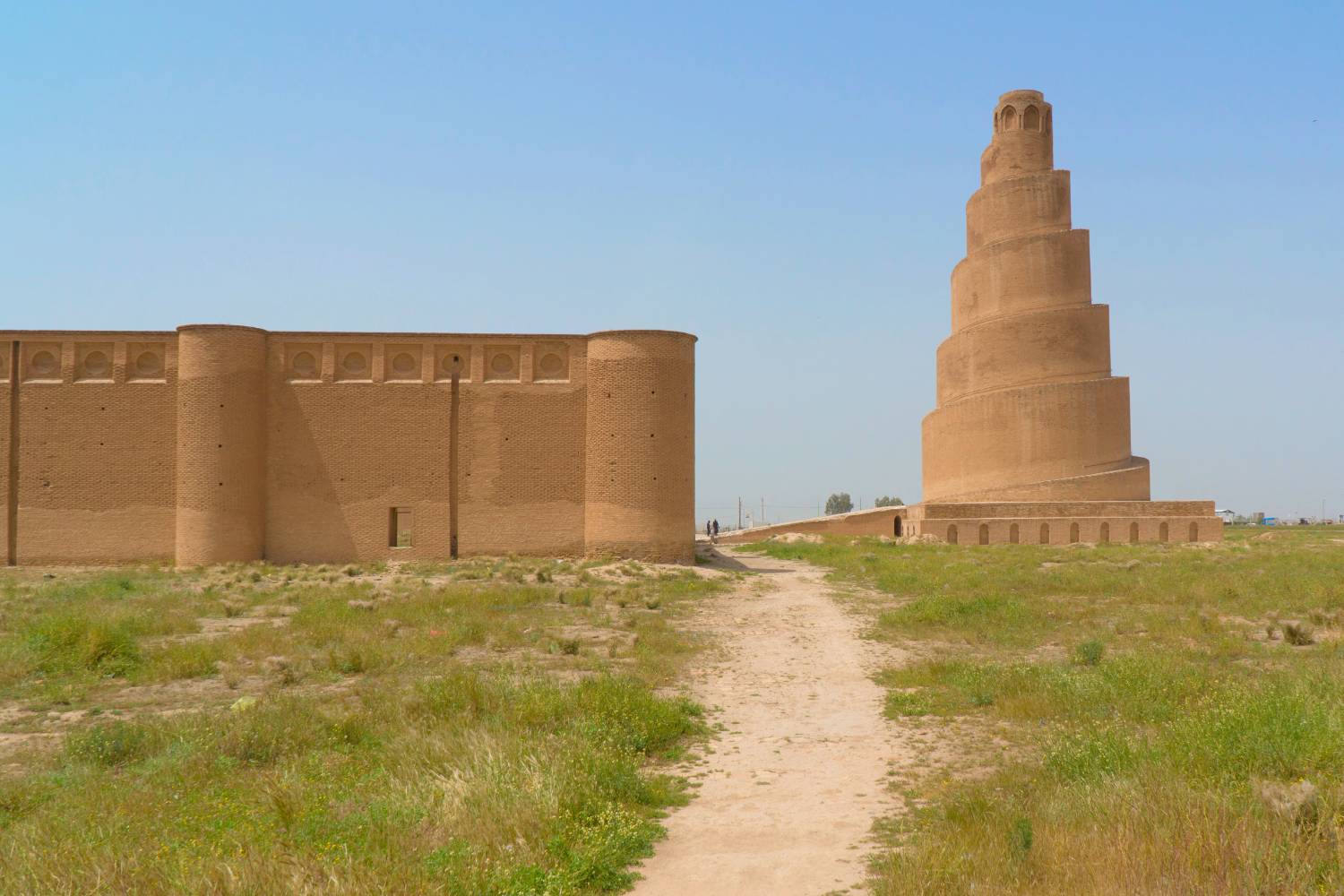Samarra, located on the eastern bank of the Tigris River in modern-day Iraq, is an ancient city that holds immense historical and cultural significance. As one of the ancient capitals of the Islamic world, Samarra offers a wealth of historical and architectural marvels that highlight the grandeur and sophistication of the Abbasid Caliphate. From its sprawling Great Mosque to the iconic spiral minaret, Samarra stands as a testament to the architectural and cultural achievements of the Islamic Golden Age.
Highlights
- Great Mosque of Samarra: Once the largest mosque in the world.
- Spiral Minaret (Malwiya Tower): An iconic structure with a unique helical design.
- Palace of the Caliphs: A grand palace complex showcasing Abbasid architectural brilliance.
- Qasr al-Ashiq: A magnificent palace known for its intricate design and historical significance.
- Samarra Archaeological City: A UNESCO World Heritage site encompassing various ruins and historical structures.
Historical Timeline
- 836 AD: Samarra is founded by Caliph Al-Mu’tasim as a new administrative capital for the Abbasid Caliphate.
- 848 AD: Construction of the Great Mosque of Samarra begins under Caliph Al-Mutawakkil.
- 851 AD: The iconic Spiral Minaret is completed, symbolizing the city’s architectural innovation.
- 861 AD: The assassination of Caliph Al-Mutawakkil leads to political instability and the beginning of Samarra’s decline.
- 892 AD: The Abbasid Caliphs return to Baghdad, marking the end of Samarra’s status as the capital.
- 1258 AD: The Mongol invasion further contributes to the city’s decline.
- 19th Century AD: Western explorers and archaeologists rediscover Samarra.
- 2007 AD: The Askari Shrine, another significant religious site in Samarra, is bombed, highlighting ongoing conflicts.
- 2014 AD: UNESCO designates Samarra Archaeological City as a World Heritage site.
- 21st Century AD: Continued archaeological efforts and preservation work are undertaken to protect and study Samarra’s heritage.
Inhabitants and Rulers
Samarra was predominantly inhabited by the Abbasid Caliphs and their court, along with a diverse population of soldiers, artisans, and scholars. Key figures associated with Samarra include:
- Al-Mu’tasim: The Abbasid Caliph who founded the city.
- Al-Mutawakkil: Known for his significant contributions to the city’s architectural landscape, including the Great Mosque and Spiral Minaret.
- Al-Mu’tazz and Al-Muhtadi: Later Abbasid Caliphs who ruled from Samarra during its peak and decline.
Architectural and Cultural Sights
1. Great Mosque of Samarra
Why Important: The Great Mosque of Samarra was once the largest mosque in the world, covering an area of 17 hectares. Its size and architectural style reflect the grandeur of the Abbasid Caliphate and its emphasis on monumental religious buildings.
2. Spiral Minaret (Malwiya Tower)
Why Important: The Spiral Minaret is one of the most iconic structures in Islamic architecture. Its unique helical design and towering presence symbolize the architectural innovation of the Abbasid era.
3. Palace of the Caliphs
Why Important: Also known as Dar al-Khilafa, this grand palace complex served as the residence of the Abbasid Caliphs. It showcases the luxurious lifestyle and architectural sophistication of the period.
4. Qasr al-Ashiq
Why Important: This palace, built by Caliph Al-Mu’tamid, is known for its intricate design and historical significance. It reflects the opulence and cultural achievements of the Abbasid dynasty.
5. Samarra Archaeological City
Why Important: Encompassing various ruins and historical structures, the Samarra Archaeological City is a UNESCO World Heritage site that provides invaluable insights into the urban planning and architectural achievements of the Abbasid era.
Geographic Importance
Samarra’s strategic location on the Tigris River provided significant advantages in terms of trade, transportation, and military defense. The river facilitated the movement of goods and people, contributing to the city’s prosperity and growth. Additionally, its position allowed the Abbasid Caliphs to maintain control over important trade routes connecting the Mediterranean with the Indian subcontinent.
Conclusion
Samarra, with its rich history, architectural marvels, and strategic importance, remains a key site in the study of ancient Islamic civilization. From the grandeur of the Great Mosque to the unique Spiral Minaret, Samarra offers a profound glimpse into the cultural and architectural achievements of the Abbasid Caliphate. Exploring Samarra provides a deeper understanding of the Islamic Golden Age and the historical legacy of one of the world’s most influential cities. Whether you are a history enthusiast or a curious traveler, the ancient city of Samarra offers a captivating journey into the past.
Keywords: Ancient city of Samarra, Abbasid Caliphate, Great Mosque of Samarra, Spiral Minaret, Malwiya Tower, Samarra Archaeological City, UNESCO World Heritage site, Islamic architecture, Abbasid architecture, Mesopotamian history, Iraq historical sites, Tigris River, Abbasid Caliphs, Samarra cultural significance.



